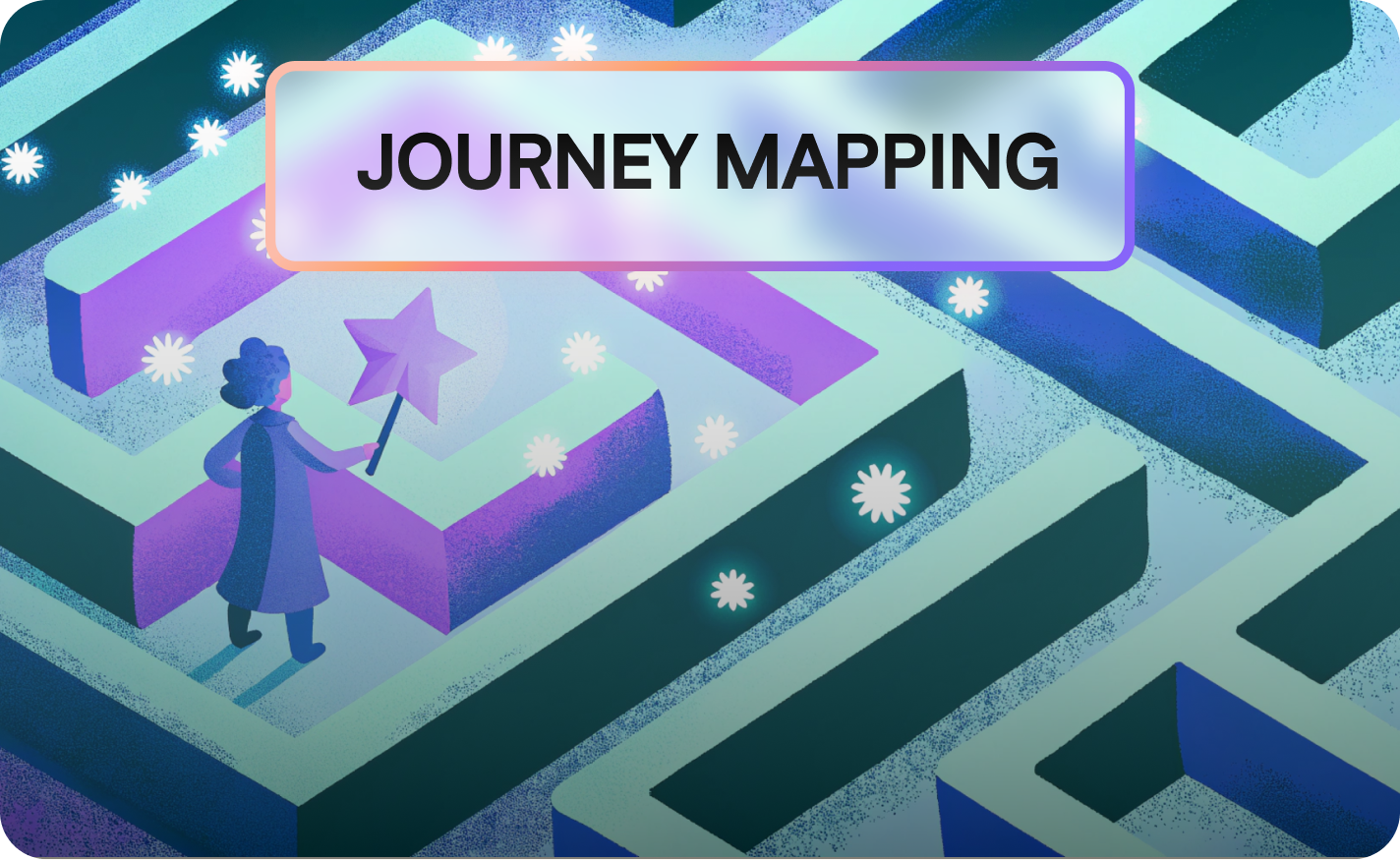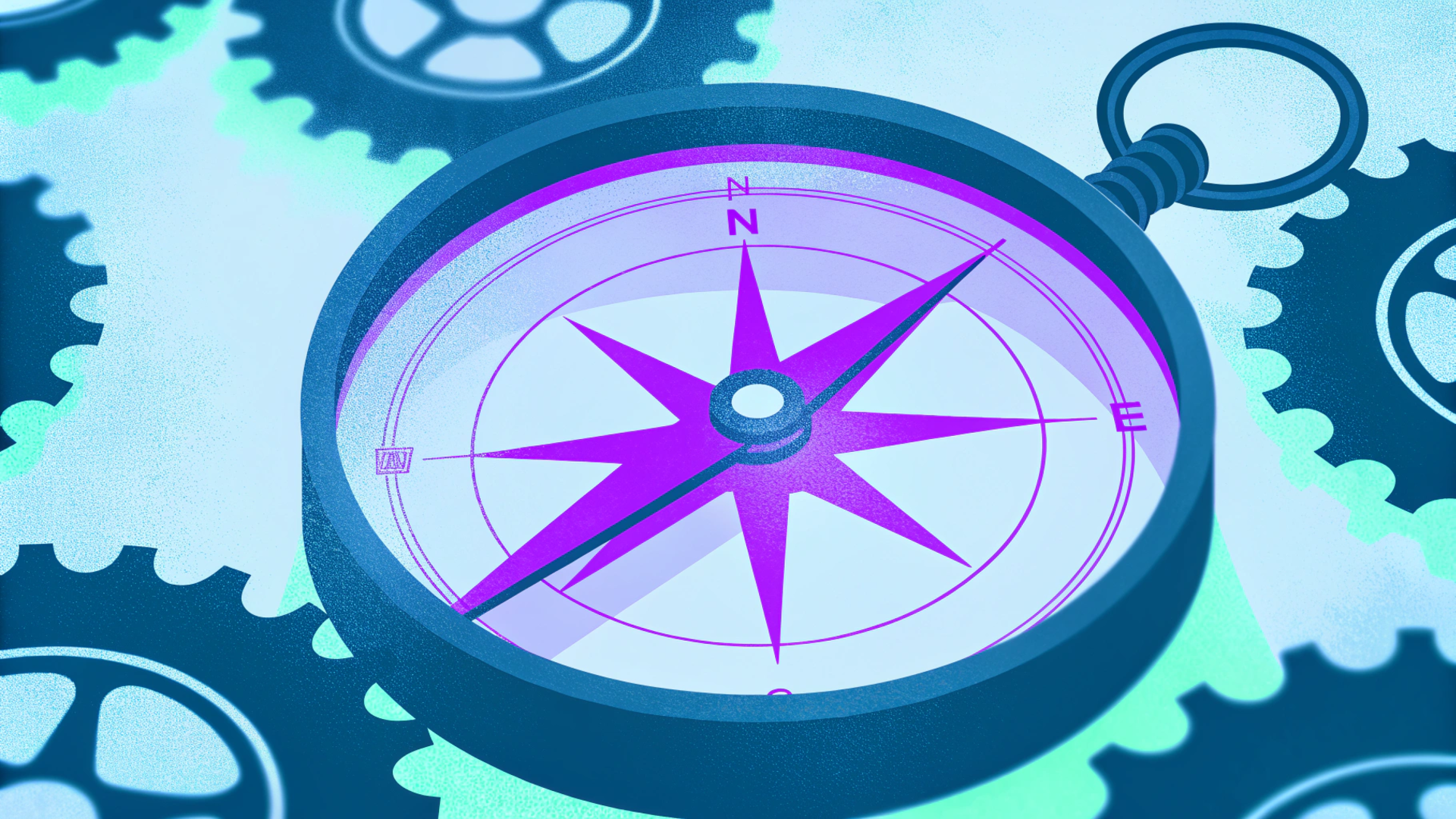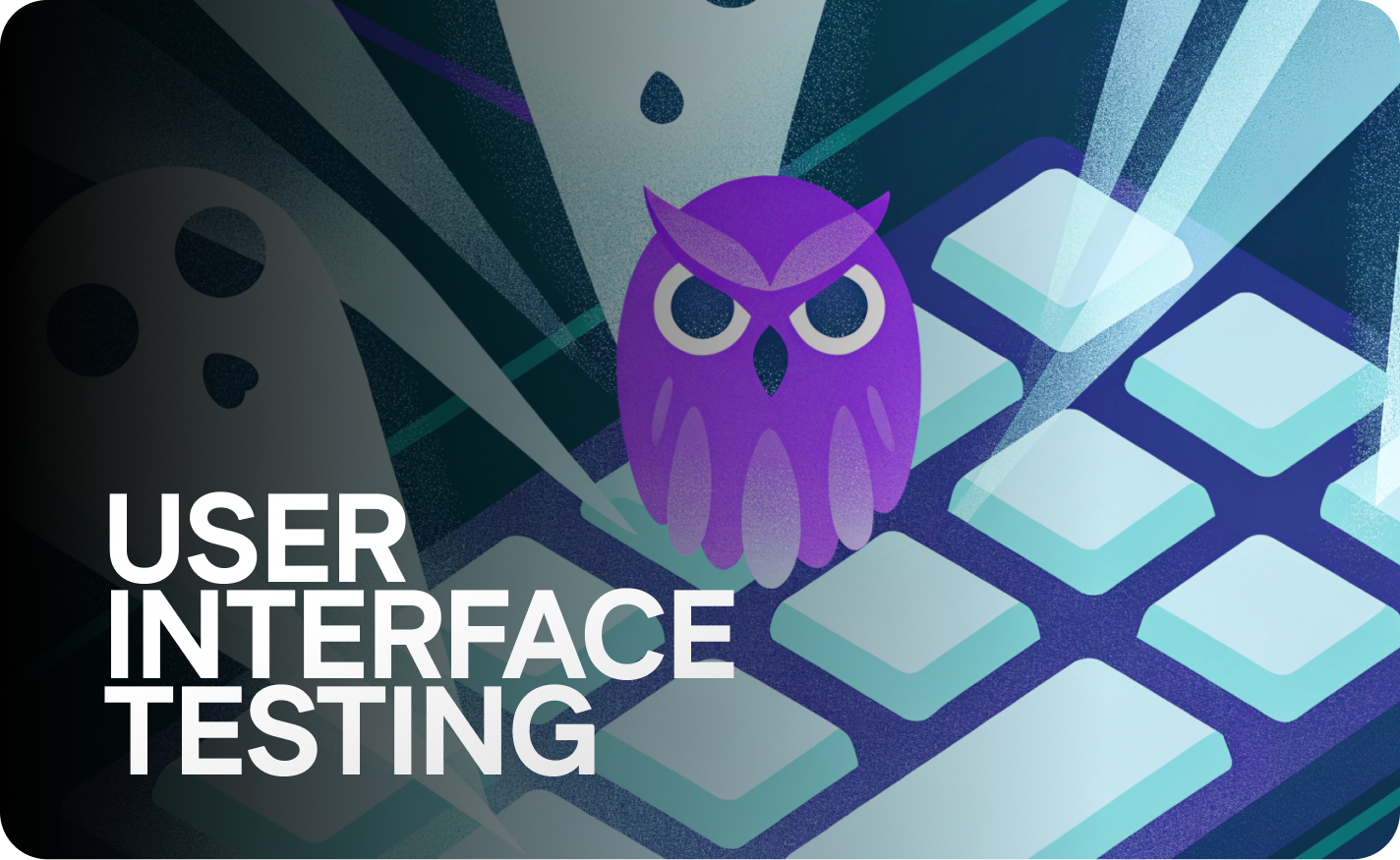Customer Journey Mapping: Guide to Great Customer Journeys

Navigating the complexities of the modern business landscape requires a deep understanding of your customer. Customer journey mapping is the key to unlocking this understanding, offering a visual representation of your customer’s interactions and experiences with your brand. It allows businesses to step into the shoes of their customers, anticipate their needs, and optimize every touchpoint for maximum impact. Let's dive into the essence of this powerful tool and discover how it can revolutionize your approach to customer experience.
Understanding Journey Mapping

What is Customer Journey Mapping?
What is customer journey mapping? It’s essentially a visual storyline of your customer's interactions with your company. The mapping process involves charting out every step the customer takes, from initial awareness to purchase and beyond. It’s not just about the transactions; it’s about capturing the customer behavior, emotions, and pain points along the way. By understanding customer needs and motivations at each customer journey stage, you can tailor your services to create a more satisfying and effective customer experience for existing customers and potential new ones.
Why is Journey Mapping Important?
Why is journey mapping so crucial? Companies that don't use customer journey mapping may miss out on 15-20% of potential revenue growth by not identifying opportunities to enhance customer engagement. Effective customer journey mapping aligns various teams within your organization, optimizing omnichannel experiences and cultivating customer loyalty through personalized interactions. When you understand the entire customer journey, you can pinpoint areas for improvement, address customer pain points, and provide better customer support throughout the customer lifecycle. A good grasp of customer behavior can lead to increased customer satisfaction and customer retention.
Key Components of a Customer Journey
To effectively use customer journey mapping, you need to understand the key components. The process involves several crucial steps, including:
- Defining your customer persona, which represents your ideal customer.
- Identifying all customer touchpoints where the customer interacts with your brand. These include website visits, social media interactions, and customer support calls.
After that, outline the customer journey stages such as awareness, consideration, decision, and loyalty. Finally, gather customer data and customer feedback to understand customer sentiment and improve customer satisfaction. Remember to make the journey as seamless as possible for your customers to get a great customer journey.
Customer Journey Mapping Process

Defining Customer Journey Stages
To effectively use customer journey mapping, defining the customer journey stages is crucial. What are the stages a customer goes through when interacting with your brand? Typically, these stages involve several key steps:
- Awareness, when the customer first learns about your product or service.
- Consideration, when the customer starts researching and comparing options.
- Decision, when the customer makes a purchase.
- Loyalty, when the customer becomes a repeat buyer and advocate for your brand.
Understanding these customer journey stages allows you to tailor your approach and improve the customer experience at each point.
Mapping Techniques and Tools

Selecting the right mapping techniques and tools can significantly enhance your customer journey mapping efforts. Various techniques exist, from simple spreadsheets to sophisticated visualization software. Consider using journey analytics tools that integrate customer data from multiple sources to provide a holistic view of the customer's journey. Tools like [LiveSession](https://livesession.io) offer session replay and analytics capabilities that allow you to observe customer behavior in real-time, identify pain points, and gather customer feedback. Remember to pick a tool that aligns with your goals and helps improve customer satisfaction.
Creating Effective Map Examples
Here's how to create effective map examples. You need to focus on key aspects. Specifically, it's helpful to:
- Map the customer's actions, touchpoints, and emotions at each customer journey stage.
- Incorporate visual elements like timelines and flowcharts to make the map easy to understand.
By following these steps, you can create effective customer journey maps that drive customer success and improve customer retention. Remember to validate your map with real customer experiences to ensure its accuracy.
Enhancing Customer Experience through Mapping
Identifying Pain Points in Customer Journeys
Customer journey mapping is invaluable for pinpointing customer pain points. These could be anything from a confusing checkout process to a lack of clear information on your website. What challenges does the customer face? By visualizing each customer touchpoint, you can easily identify where customer support may be lacking and where customer satisfaction drops. Session replays from [LiveSession](https://livesession.io) allow you to analyze actual customer behavior, providing insights into why customers are abandoning carts or struggling to navigate your site. This deeper understanding empowers you to improve the entire customer journey and enhance the existing customer experience by addressing their specific needs and enhance the ideal customer journey.
Improving Customer Satisfaction with Insights
Improve customer satisfaction by using customer journey mapping to gain a deeper understanding of what your customer experiences. Journey mapping allows you to identify areas where you can exceed customer expectations and deliver exceptional value. What delights will the customer discover? By understanding customer sentiment and addressing their specific needs, you can create a more positive and engaging customer experience. Regularly gathering customer feedback and incorporating it into your map will help you fine-tune your efforts and drive continuous improvement in customer journeys and the entire customer experience. Remember to make the journey as seamless as possible for your customers to get a great customer journey.
Using Data to Enhance the Buyer Journey
Data is the backbone of effective customer journey mapping, providing actionable insights that can significantly enhance the buyer journey. What story does the data tell? By analyzing customer behavior, customer data, and customer feedback, you can identify patterns and trends that inform your mapping process. Implement journey analytics to track customer interactions across different channels and touchpoints. Use customer surveys and other feedback mechanisms to gather qualitative data that provides context and depth to your analysis. This data-driven approach ensures that your journey maps are grounded in reality and that your efforts are focused on delivering tangible improvements in customer satisfaction and customer success.
Case Studies of Successful Journey Mapping

Personalization in Action: Starbucks
Starbucks transformed its customer experience through journey mapping by focusing on personalization. Starbucks mapped online-offline journeys, introducing Mobile Order & Pay and personalized rewards, boosting engagement and loyalty while simplifying navigation—resulting in higher customer retention. What's the result of a unified experience? By understanding how the customer interacts with their brand across various touchpoints, Starbucks created a seamless and consistent customer experience, leading to increased customer loyalty and revenue. This case study demonstrates the power of journey mapping in enhancing the existing customer experience through personalization and improved customer service.
Seamless Integration: IKEA
IKEA’s customer journey mapping success lies in their ability to seamlessly integrate the online and offline shopping experiences. IKEA blended digital product visualization with in-store assembly flows, addressing needs like efficient shopping—yielding high customer conversions and loyalty through enjoyable, need-focused experiences. How does IKEA make shopping easier? By identifying and addressing customer pain points at each customer journey stage, IKEA created a more enjoyable and efficient shopping experience. This improved customer satisfaction and drove customer retention, solidifying IKEA's position as a leader in customer-centric retail. This is a great customer journey for the customer and for the business.
Adapting for B2B: HPE
HPE, a B2B company, used customer journey mapping to address the complexities of their customer base. HPE created persona-specific maps focusing on operational and cost priorities, from discovery to purchase—improving customer retention by tailoring pain point solutions. How do you meet diverse customer needs? By creating customer persona-specific maps tailored to different customer segments, HPE was able to provide more relevant and personalized solutions. This approach improved customer satisfaction and increased customer retention, demonstrating the versatility of customer journey mapping in a B2B context. The entire journey was more streamlined for the customer, providing a great customer journey.
Metrics to Measure the Impact of Journey Mapping

Key Performance Indicators for Customer Success
What key performance indicators (KPIs) should you track to measure the impact of journey mapping on customer success? Some crucial metrics include customer retention rate, customer satisfaction (CSAT) scores, and Net Promoter Score (NPS). Also important are customer lifetime value (CLTV) and churn rate, which provide insights into the long-term effects of your customer experience initiatives. Regular monitoring of these metrics helps you assess the effectiveness of your customer journey improvements and ensure you are meeting customer needs and driving customer satisfaction, ultimately leading to customer success.
Tracking Improvements in Customer Retention
How do you effectively track improvements in customer retention using customer journey mapping? Start by identifying the customer journey stages where customers are most likely to churn. Then, analyze customer feedback and customer behavior data to understand why customers are leaving. By mapping these customer pain points and addressing them with targeted solutions, you can enhance the existing customer experience and improve customer retention. Regularly monitor your customer retention rate to measure the impact of your improvements and make necessary adjustments to your strategies for the customer’s journey. This way you can make the journey as seamless as possible for your customers to get a great customer journey.
Using NPS and CSAT in Customer Journey Analysis
How can you effectively use Net Promoter Score (NPS) and Customer Satisfaction Score (CSAT) in customer journey analysis? What is NPS? It is calculated as (% Promoters - % Detractors) from survey responses on a 0-10 scale. What is CSAT? It is calculated as (Number of Satisfied Customers / Total Respondents) × 100. Use these customer feedback metrics at specific customer touchpoints to gauge customer sentiment and identify areas for improvement. Analyze NPS at the loyalty stage to measure advocacy and CSAT during the consideration phase to refine interactions. This data-driven approach ensures that you are addressing customer needs and enhancing customer satisfaction throughout the customer journey. You can effectively use customer journey mapping to identify improvements for both metrics. By following this advice, you’ll make the journey better for both you and your customer.
Final Thoughts on Customer Journey Mapping

Importance of Continuous Improvement
Why is continuous improvement so vital in customer journey mapping? Because customer needs and expectations are always evolving, your maps must adapt to reflect these changes. Regularly review and update your maps with new customer data and customer feedback to ensure their accuracy and relevance. Embrace a culture of continuous improvement, where you are constantly seeking ways to enhance the customer experience and drive customer satisfaction. By staying agile and responsive, you can ensure that your customer journey mapping efforts continue to deliver value and support your business goals throughout the entire journey.
Future Trends in Journey Mapping
What are the future trends shaping the world of journey mapping? Expect to see greater integration of artificial intelligence (AI) and machine learning (ML) to automate and personalize the mapping process. Predictive analytics will play a larger role in anticipating customer needs and identifying potential pain points before they arise. Additionally, there will be a greater emphasis on real-time journey mapping, allowing businesses to respond dynamically to customer actions and preferences. Embrace these trends to stay ahead of the curve and deliver exceptional customer experiences that drive customer satisfaction and customer success. Using [LiveSession](https://livesession.io) can help you understand how your customer base experiences the customer journey.
Call to Action: Start Your Journey Mapping Today
Ready to transform your customer experience? Start your journey mapping today! Begin by defining your customer persona and identifying key customer touchpoints. Use journey analytics tools like LiveSession to gather customer data and customer feedback. Map the customer’s journey, identify pain points, and develop solutions to enhance customer satisfaction and improve customer retention. Remember, the goal is to create a seamless and enjoyable experience that drives customer loyalty and business growth. Start your journey today and unlock the power of journey mapping! By focusing on customer needs, your mapping process will lead to a great customer journey.
Related articles
Get Started for Free
Join thousands of product people, building products with a sleek combination of qualitative and quantitative data.




